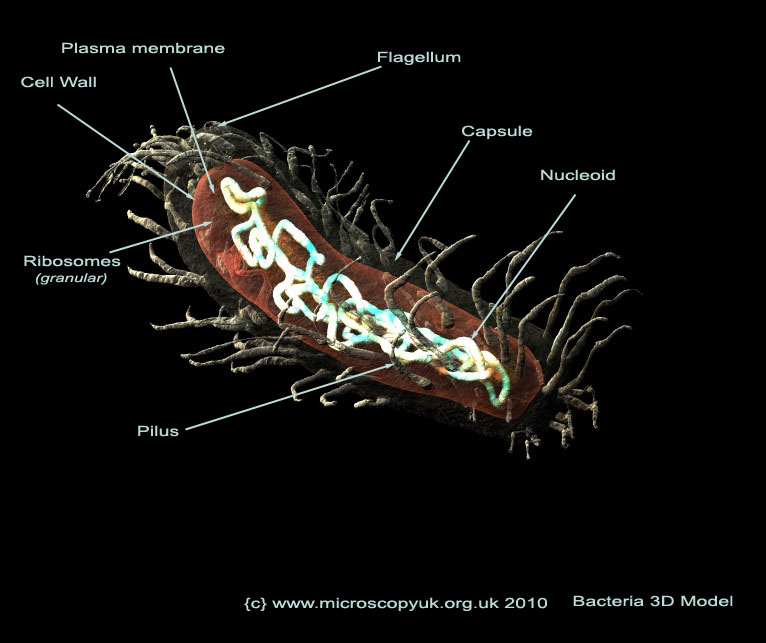|
Using 3D Modelling To Assist Microscopy
Study |
| Intro Wasp Fly Grass Hopper Bacteria1 Bacteria2 Downloads | |
| To download high res avi files select from here:: | Wasp Fly1 Fly2 Grass Hopper Bacteria1 Bacteria2 All - please see licence terms here) Models |
|
Smaller Things - Bacteria
|
||
| Rod-shaped Bacterium A simple bacterium. The DNA is in the Nucleoid or the cell and is nor contained within a separate membrane. In this model representation, the Ribosomes are depicted as a granular texture along the cell membrane. Projecting from the walls of some bacteria are pili (singular: pilus) - shorter than flagella (singular: flagellum), which are concerned with cell-to-cell or cell-to-surface attachment. They are 'sticky'. Like all cells, the living material is surrounded by a partially permeable membrane, also the site of respiratory enzymes. Motile bacteria can move in response to certain stimuli, for example - aerobic bacteria will swim towards oxygen, whereas photosynthetic bacteria will move towards a light source. Learn more about how the bacterium moves here. Anyone interested in learning more about Bacteria can use the links below to further their study. |
||
| Further information about Bacteria: wiki Mic-UK article by Wim van Egmond |
Comments to the author Mol
Smith are welcomed.
Microscopy
UK Front Page
Micscape Magazine
Article Library
all material © Mol Smith
Published in Jan 2010 Micscape Magazine.
Please report any Web problems or offer general comments to the Micscape Editor.
Micscape is the on-line monthly magazine of the Microscopy UK web site at Microscopy-UK
© Onview.net Ltd, Microscopy-UK, and all contributors 1995 onwards. All rights reserved. Main site is at www.microscopy-uk.org.uk
